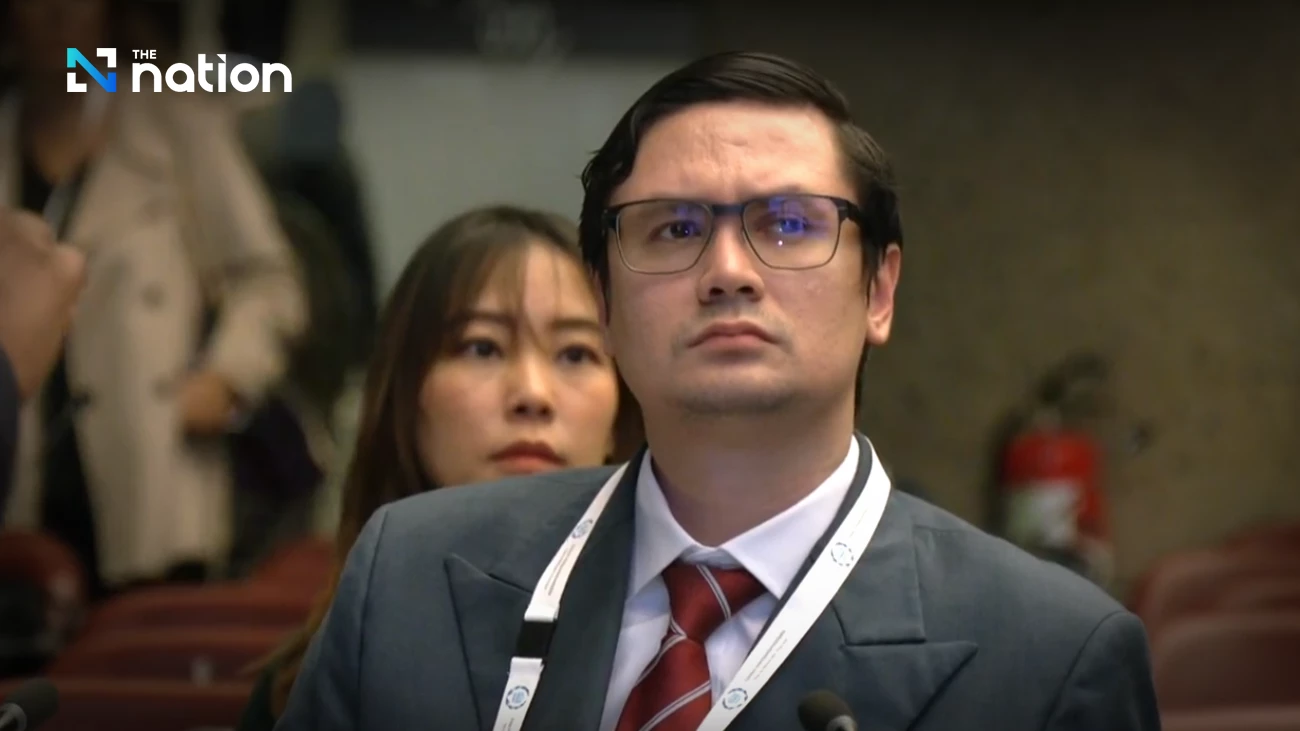Thailand pushes urgent cybercrime agenda at IPU meeting in Geneva – Nation Thailand

Report on Thailand’s Address to the 151st Inter-Parliamentary Union Assembly on Global Security and Sustainable Development
1. Redefining National Security in Alignment with Sustainable Development Goal 16
At the 151st Inter-Parliamentary Union (IPU) Assembly on October 20, the Thai delegate, MP Rangsiman Rome, presented a reframed concept of global security. The address posited that true national strength is demonstrated by the commitment to disarmament rather than the accumulation of arms. This perspective directly supports the objectives of Sustainable Development Goal 16: Peace, Justice and Strong Institutions, which aims to promote peaceful and inclusive societies for sustainable development.
- The delegate asserted that arms control is fundamentally about preserving human life, a core tenet of sustainable development.
- The statement, “Arms control is not about counting weapons… It is about counting lives,” underscores a human-centric approach to security policy.
2. Thailand’s Official Stance on Non-Proliferation and Regional Stability
During the Panel Discussion on “Arms Control Policy and Non-Proliferation,” Thailand’s official position was articulated, confirming a commitment to peace and non-participation in regional arms races. This policy is a practical application of SDG 16.4, which calls for a significant reduction in illicit financial and arms flows.
- Thailand’s stance promotes regional trust and stability, creating an environment conducive to achieving broader sustainable development objectives.
- By prioritizing peace, the nation contributes to the foundational security necessary for economic growth, social equity, and environmental protection.
3. Humanitarian Disarmament and its Impact on Multiple SDGs
The report highlighted Thailand’s long-term efforts in humanitarian disarmament as a State Party to the Ottawa Convention on the Prohibition of Anti-Personnel Mines. The clearance of mine-contaminated lands has a direct and positive impact on several interconnected SDGs:
- SDG 11 (Sustainable Cities and Communities): Clearing landmines restores safety, making land viable for habitation and infrastructure, thereby creating safe and resilient communities.
- SDG 1 (No Poverty) & SDG 2 (Zero Hunger): Reclaimed land can be used for agriculture, restoring livelihoods and enhancing food security for local populations.
- SDG 3 (Good Health and Well-being): The removal of explosive remnants of war prevents death and severe injury, directly contributing to public health and well-being.
4. A Call to Action for Global Partnership (SDG 17)
A significant concern was raised regarding the continued use of landmines in the region, which undermines international treaties and threatens human security. The delegate issued a moral call to action, urging a collective commitment to a future where development is not hindered by the fear of hidden weapons. This appeal for collaborative effort resonates with SDG 17: Partnerships for the Goals.
- The address concluded by urging states to measure their strength “not by how deeply it can bury instruments of war, but by how bravely it can unearth them.”
- This final statement serves as a call for a strengthened global partnership to achieve comprehensive disarmament and advance the universal 2030 Agenda for Sustainable Development.
Analysis of Sustainable Development Goals in the Article
-
Which SDGs are addressed or connected to the issues highlighted in the article?
The primary Sustainable Development Goal (SDG) addressed in the article is:
- SDG 16: Peace, Justice and Strong Institutions
Explanation: The article’s entire focus is on promoting peace and international security. The discussion revolves around themes central to SDG 16, such as arms control, non-proliferation, disarmament, and reducing violence. The Thai delegate’s speech at the Standing Committee on Peace and International Security directly addresses the goal of building peaceful societies. The call to action to create a “region where no child walks in fear of hidden weapons” and the statement that arms control is about “counting lives—and ensuring that none are lost needlessly” explicitly link the article’s content to the core mission of SDG 16.
-
What specific targets under those SDGs can be identified based on the article’s content?
Based on the article, the following specific targets under SDG 16 can be identified:
- Target 16.1: Significantly reduce all forms of violence and related death rates everywhere.
- Target 16.4: By 2030, significantly reduce illicit financial and arms flows, strengthen the recovery and return of stolen assets and combat all forms of organized crime.
Explanation: This target is directly addressed through the focus on clearing landmines and controlling arms to prevent needless deaths. The delegate’s statement, “Arms control is not about counting weapons… It is about counting lives—and ensuring that none are lost needlessly,” is a clear call to reduce death rates caused by violence and armed conflict. The effort to clear “mine-contaminated lands” is a tangible action aimed at preventing violence and death from these weapons.
Explanation: The panel discussion’s focus on “Arms Control Policy and Non-Proliferation” and Thailand’s official stance of “non-involvement in an arms race” directly relate to controlling the flow of arms. The warning about “freshly laid devices that betray the very spirit of the treaties we have all pledged to uphold” points to the problem of illicit arms proliferation that this target aims to address.
-
Are there any indicators mentioned or implied in the article that can be used to measure progress towards the identified targets?
The article implies several indicators that can measure progress towards the identified targets:
- Indicator for Target 16.1: Reduction in the number of casualties (deaths and injuries) from landmines and other hidden weapons.
- Indicator for Target 16.1: Area of land cleared of anti-personnel mines.
- Indicator for Target 16.4: Adherence to and implementation of international treaties on arms control.
Explanation: While not stating a specific metric, the moral goal of a “region where no child walks in fear of hidden weapons” and the focus on ensuring no lives are “lost needlessly” imply that a key measure of success is the reduction of human suffering and death caused by these devices.
Explanation: The article explicitly mentions “Thailand’s decades of effort clearing mine-contaminated lands, restoring safety and livelihoods.” The amount of land cleared is a direct and measurable indicator of progress in reducing the threat of violence from these weapons and making communities safer.
Explanation: The article highlights Thailand’s status as a “State Party to the Ottawa Convention on the Prohibition of Anti-Personnel Mines.” A country’s commitment to, and compliance with, such international agreements serves as an indicator of its efforts to control arms and prevent their proliferation.
-
Create a table with three columns titled ‘SDGs, Targets and Indicators” to present the findings from analyzing the article. In this table, list the Sustainable Development Goals (SDGs), their corresponding targets, and the specific indicators identified in the article.
SDGs Targets Indicators (Implied or Mentioned in the Article) SDG 16: Peace, Justice and Strong Institutions 16.1: Significantly reduce all forms of violence and related death rates everywhere. - Number of casualties (deaths and injuries) from landmines.
- Area of land cleared of mine contamination.
SDG 16: Peace, Justice and Strong Institutions 16.4: By 2030, significantly reduce illicit financial and arms flows… - Level of adherence to international arms control treaties (e.g., Ottawa Convention).
Source: nationthailand.com
What is Your Reaction?
 Like
0
Like
0
 Dislike
0
Dislike
0
 Love
0
Love
0
 Funny
0
Funny
0
 Angry
0
Angry
0
 Sad
0
Sad
0
 Wow
0
Wow
0















































/environment-climate-change-and-health-(ech)/water-sanitation-hygiene-and-health-(wsh)/landfill-tuvalu-36092.tmb-1200v.jpg?sfvrsn=5c21fe40_1#)


.jpg.webp?itok=0ZsAnae9#)


























